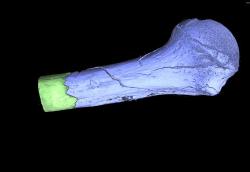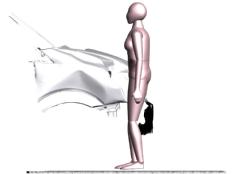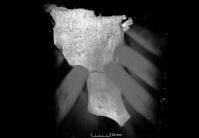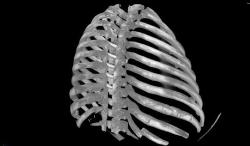3D printed models to aid the jury
We received a section of an individual’s skull which showed the impressions of some form of instrument. The micro-CT displayed these impressions in great detail, revealing two distinct shapes. These could be matched with a hammer and a spanner that were found at the scene, proving that both tools had been used.
The skull section was 3D printed and shown to the jury during trial to visualise the injuries. This was accompanied by Professor Williams giving expert witness testimony regarding the scanning and 3D printing processes to validate the evidence.

 In a case of complex dismemberment, we delivered one of the first examples of micro-CT technology as a forensic radiological method in a UK courtroom.
In a case of complex dismemberment, we delivered one of the first examples of micro-CT technology as a forensic radiological method in a UK courtroom. In the case of a fatal Road Traffic Accident, 3D imaging technology allowed us to precisely recreate multiple elements of the crime scene, and put together a complete picture of what took place.
In the case of a fatal Road Traffic Accident, 3D imaging technology allowed us to precisely recreate multiple elements of the crime scene, and put together a complete picture of what took place.
 In a case of suspicious infant death, our scans revealed, in microscopic detail, that the victim had suffered a series of injuries which showed various degrees of healing without signs of medical intervention. This indicated neglect and abuse over a period of time.
In a case of suspicious infant death, our scans revealed, in microscopic detail, that the victim had suffered a series of injuries which showed various degrees of healing without signs of medical intervention. This indicated neglect and abuse over a period of time.